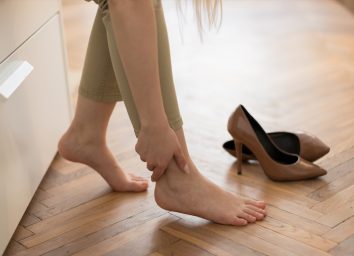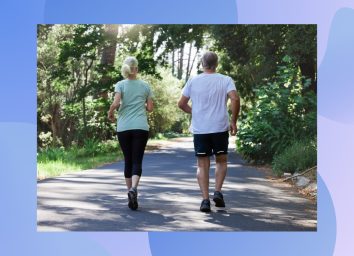Secret Tricks for Walking Better Starting Now, Say Experts
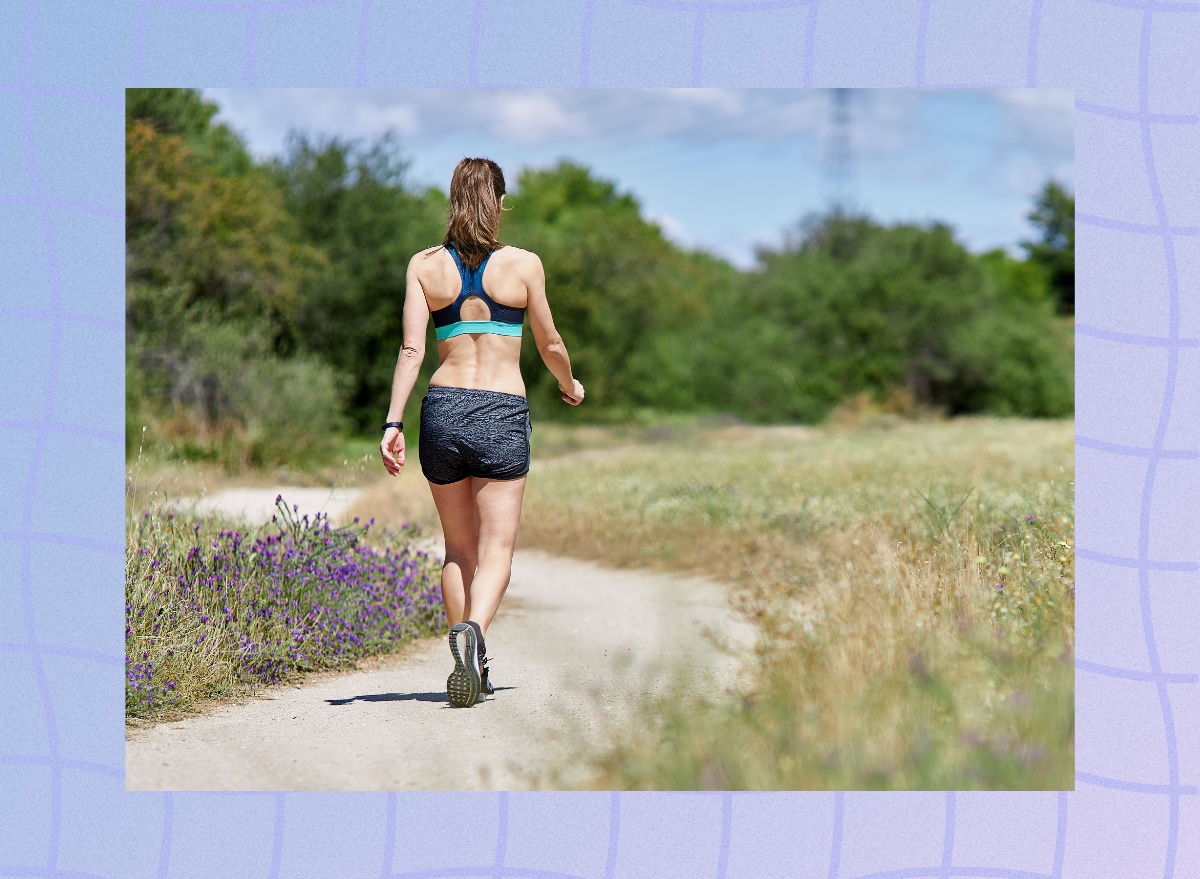
Just because walking comes naturally to us as bipedal mammals doesn't mean we're all necessarily performing the movement optimally. After all, common mistakes while walking include leaning too far forward (which can lead to back pain, over-striding (which can hurt your shins and hobble your kinetic chain), walking totally flat-footed (which leads to pain), and not using your head, arms, hips, or feet in the correct manner.
If you'd like to be a better and more efficient walker—and protect your body for the long haul—see here for some tricks for walking better straight from the top experts, as well as some notable studies. And for some reasons why you definitely want to walk more, see here for What Happens to Your Body When You Walk More, Says Science.
Lengthen your spine into your head
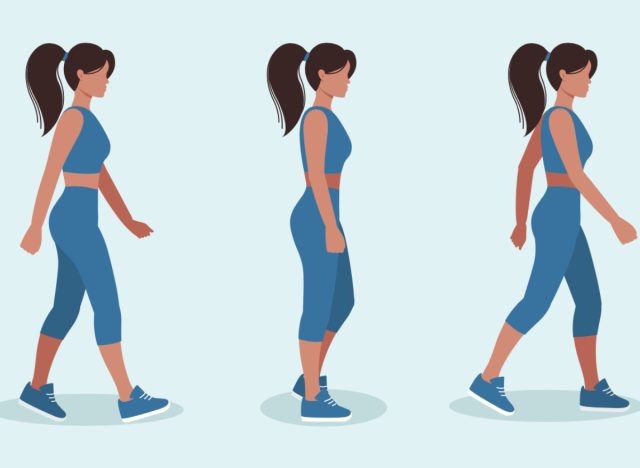
Walking with your head down or hanging isn't just a sign of your poor mood. It's a sign of poor posture. And remember: The average human head weighs roughly 11 pounds—which is roughly the same weight as a cat, five bags of sugar, or bowling balls—and when you lean it forward for long periods of time, it will not only add unwanted strain to your neck and spin but it will also shift your entire bodily alignment as your physique compensates.
When you walk, here's a trick for keeping your head in the proper position. "Think of your neck as part of your spine as a whole rather than a separate entity and try to increase the space between your vertebrae, expanding it like the bellows of an accordion," advise the experts at Bristol Nordic Walking. To do so, imagine that you're lengthening your spine "right up into your head." Keep your chin level to the ground. If you need to look down, turn your eyes down—not your whole head.
Embrace the roll
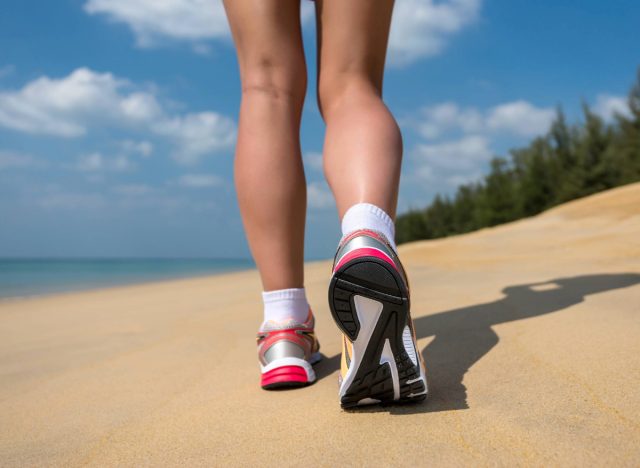
One major no-no while walking is landing your feet on the ground in a smack. If you're catching yourself flat-footed, it's terribly inefficient, and shin pain is a surefire result. Instead, you should embrace the roll of the movement. "To be a better walker, your heel should strike the ground first, then roll to the ball, then push off the big toe," says Joe Vega, C.S.C.S., the founder of The Vega Method. And for really ramping up your daily walks, see here for 4 Amazing Ways to Lose Weight While Walking for Just 20 Minutes, According to a Top Trainer.
Keep your shoulders back—and down

When people hear the word "walking," the body parts that first come to mind are likely "legs," "feet," and "hips." But your shoulders play an important role in proper walking form. "Your shoulders will be alternating pushing and pulling motions generating momentum for you to progress forward," says Vega. To maximize the benefits of walking, keep your shoulders relaxed, pulled back, and down. To ensure you're keeping them there, engage in routine "shoulder shrugs"—before your walk to loosen up and during your walk when you feel your posture starting to break down.
Keep your arms bent
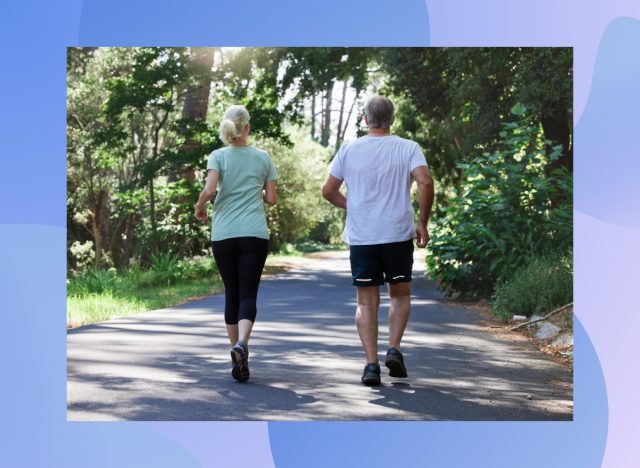
You'll add speed to your walks by ensuring that your swinging arms are bent at the elbow and not straight. According to a study published in The Journal of Experimental Biology, humans tend to straighten their arms while walking and bend them while running. It's something we do for an efficient transfer of energy through our bodies.
But if you're taking brisk walks—which are key for experiencing the full benefits of walking, burning calories, and even losing weight—you need to be sure to bend your arms more like a runner. And for some great ways to take your walking to a higher level, make sure you're aware of the The Secret Trick for Walking for Exercise, According to Health Experts at Harvard University.
Take shorter steps
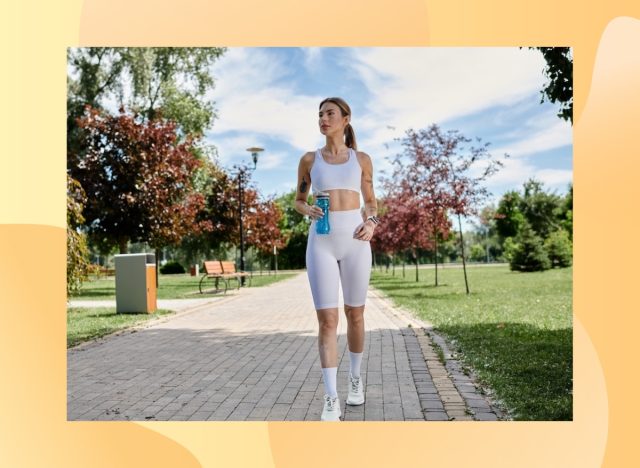
"Shorter, quicker steps are the key to going faster," write Leslie Bonci, MPH, RD, CSSD, LDN, and Michele Stanten, in the book Walk Your Butt Off! "One of the most common mistakes people make when trying to walk faster is over striding. They reach their front leg out farther than normal. Instead of speeding you along, big steps actually slow you down, because it's harder to get your body weight over an outstretched leg. In a sense, your leg acts as a break. When you take steps that are too long, you have a choppy stride and you actually increase the impact of each step, which in turn may boost your risk for injury. Shorter, quicker steps allow for a smooth, rolling stride, and they make it easier for you to shift your body weight over your front leg and swing your back leg forward."
"Lift your body out of your hips"
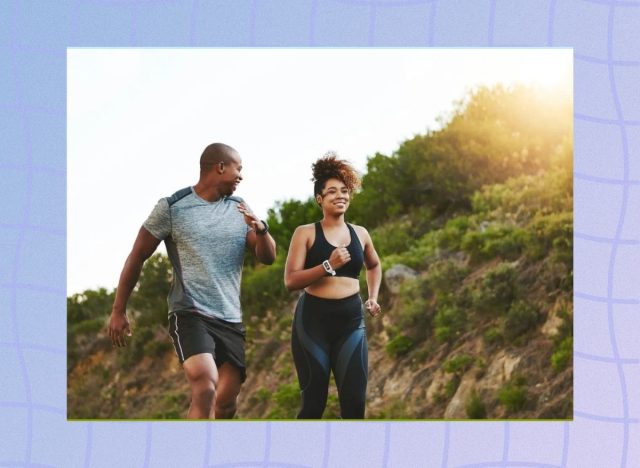
According to the WalkActive program, founded by sports scientist Joanna Hall, there are four key elements you need to master in order to become a better fitness walker. "Using your whole foot as the basis of propulsion is stage one, lifting your body out of your hips while you move is next, keeping shoulders relaxed and neck long is number three and lastly, moving your arms in a relaxed but bent position as you walk creates speed," summarizes the UK's The Telegraph.
But what does that mean? Imagine that you want to lift your upper body and chest as far above your hip bone as possible. When you perform this move while walking, you'll feel as though you're "lifting your body out of your hips," and it will create a much better and efficient walking form. (See here for a demonstration from Hall.) And to make sure you're wearing the right shoes while doing this routine, make sure you're aware of The Single Worst Shoes for Walking Every Day, According to a New Study.

